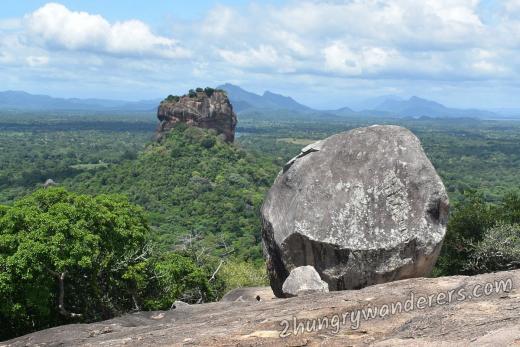
When visiting the popular Sigiriya Fortress, you will almost definitely hear about the nearby Pidurangala rock, and even if you don't, you can't miss the scenic hill, which is located just 1 km as the crow flies from the main attraction. When reading about this place one can easily get confused by the conflicting opinions about it. Is it very difficult to climb? Is it overpriced? Is it unfairly ignored by many? Here we will tell you the truth about Pidurangala, so you can decide if and how to enjoy this site.
Going in... is it worth it?
Finding the place is easy enough by following the directions on GoogleMaps. Prepared for a hike with good shoes, hats and water we got to the entrance of the temple, where visitors are required to take off shoes and hats to enter (carry them through the monastery section and put them back on at the start of the trail). There we were met by a grumpy staff member who collected the entrance fee of 500 LKR per person. Of course, this applies to foreigners only, but we also got a leaflet saying "Thank you for your donation" and vaguely hinting our money will be used for good causes. Many tourists claim the fee is too high and I tend to agree. It also feels like Pidurangala is piggybacking on the fame of the nearby top attraction and have embraced the opportunity to fleece even more the tourists who paid the extremely high fee for the fortress. Keep reading, so you can decide for yourself if the 500 rupees is money well spent or you prefer not to visit the site. I am personally on the fence.
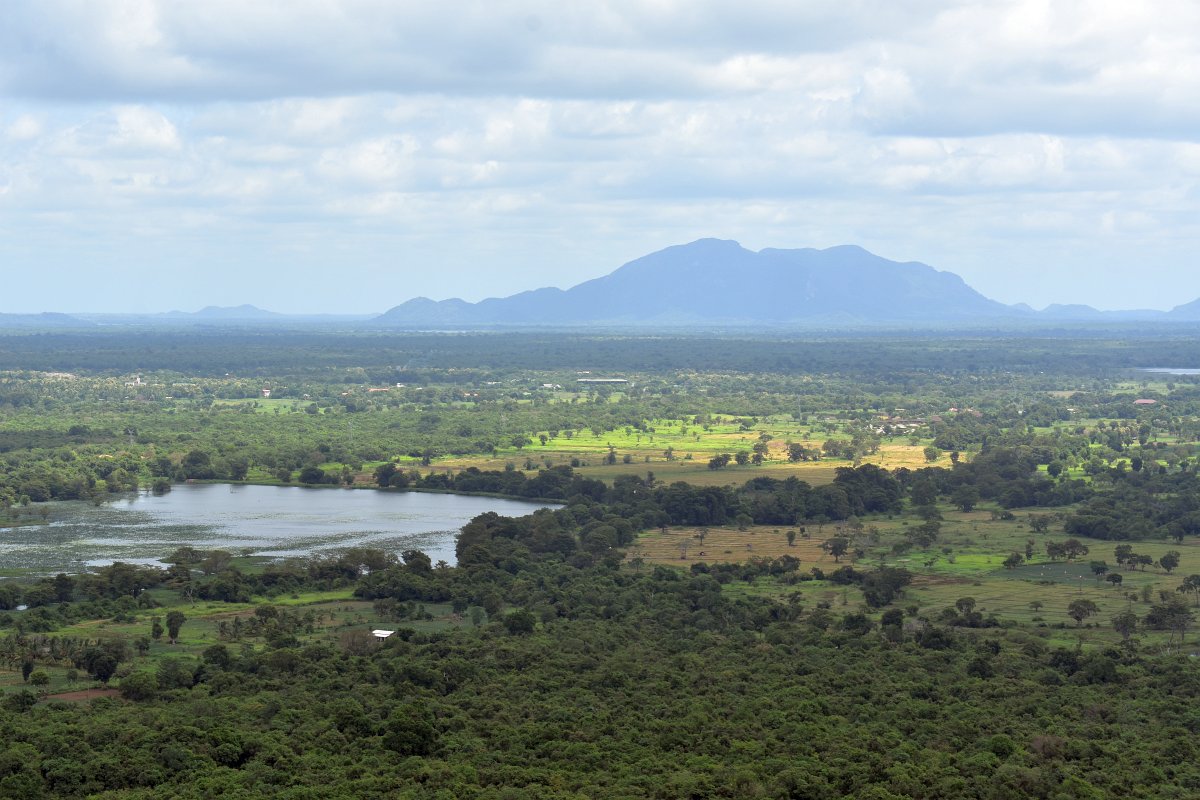
Should I just climb Pidurangala rock?
Some people say that you can just visit Pidurangala and skip Sigiriya Fortress, which makes sense financially, but I can't agree with the whole idea. Yes, the side attraction is a lot (more than 11 times) cheaper than the main one, but it can only be considered a close match when talking about nature views. Read our post to find out about all the unique things you can see in the admittedly overpriced, but rich in history Sigiriya Fortress.
The temple
There have been Buddhist monks living in the area for more than 2000 years, but the same king who built Sigiriya Fortress, Kasyapa (477-495 A.D.), built the Pidurangala Monastery and the place became a religious centre. Today it is a small and not very impressive temple with the usual bodhi tree, a dagoba and some ruins.
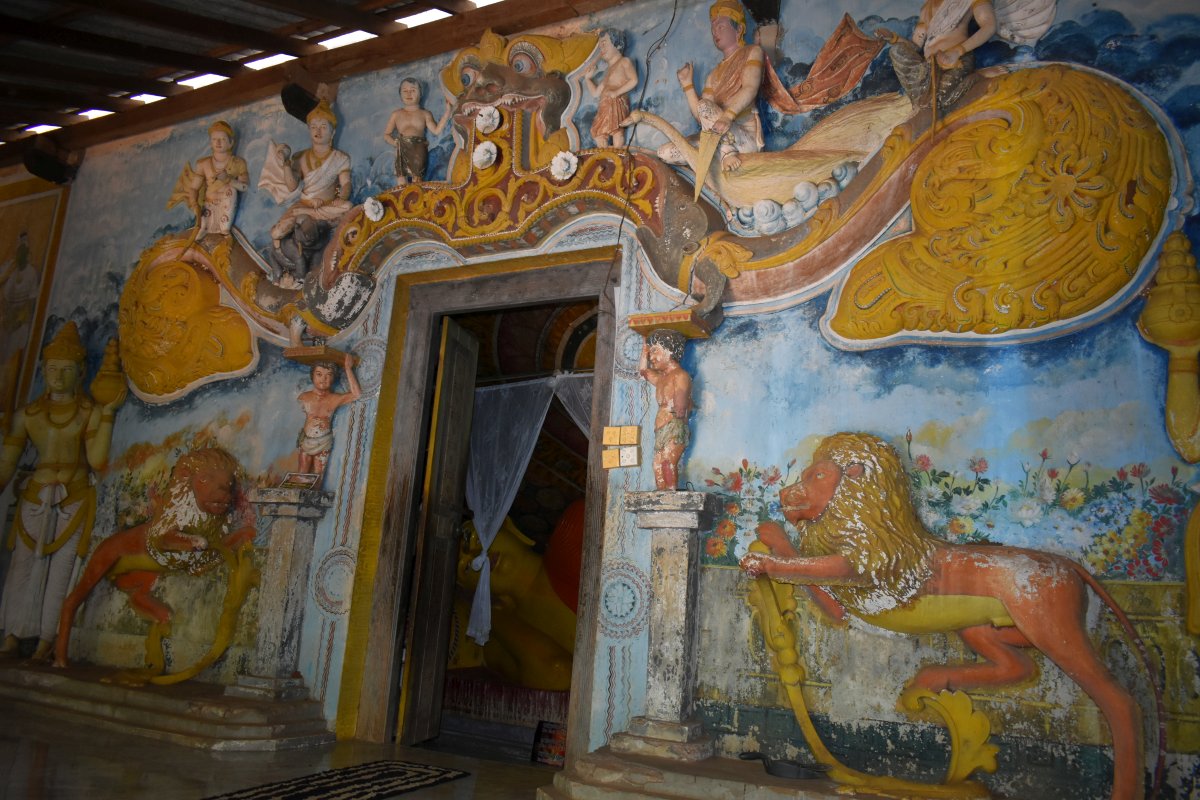
The main attraction there is a small image house covering a colourful statue of a reclining Buddha. The interior of the building is also decorated and some paintings look like they are heavily inspired by the Sigiriya Ladies frescoes. The artist tried to outdo the originals but managed to do so only in chest size, failing in the quality department.

The first stage of the climb
Right after the image house, following the path going up the hill people are allowed to put their shoes and hats on, and so we did this, ready for the climb. Some people claim it took them several hours to climb the rock, the leaflet itself gives an estimate of 2 hours. With that number in mind, we started the path, which is uphill (surprise?) but not unpleasant - wide and clean, with lots of steps. We consider our fitness level to be about average, so we were mentally prepared for several hours of walking.
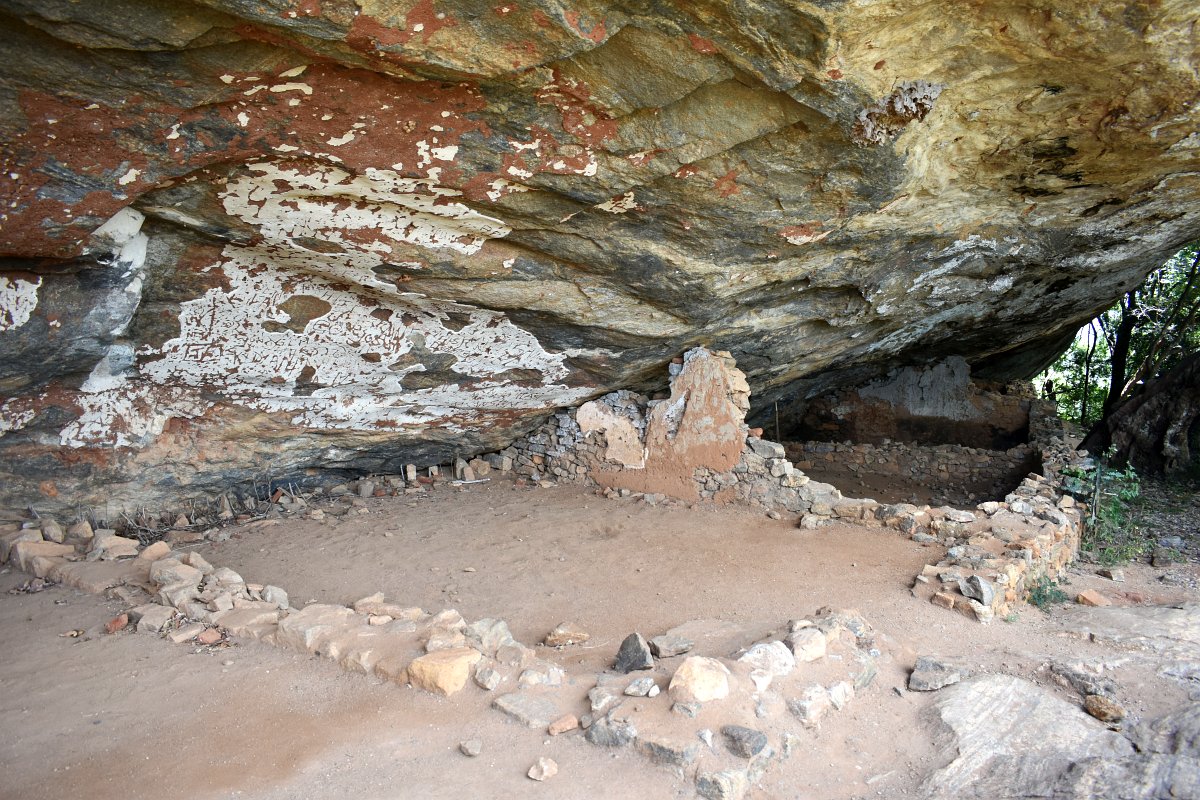
Walking past some drip ledge caves, in less than 15 minutes we got to a larger cave, which marks the end of the "easy" path. Inside the cave is a 12.5 meters long statue of a reclining Buddha made out of bricks. The statue has been destroyed in the past, but restored in recent years and now is a curious sight because some sections of it are bare brick, others are covered in white plaster, one can say that the brick Buddha is wearing only pants and a left sleeve.
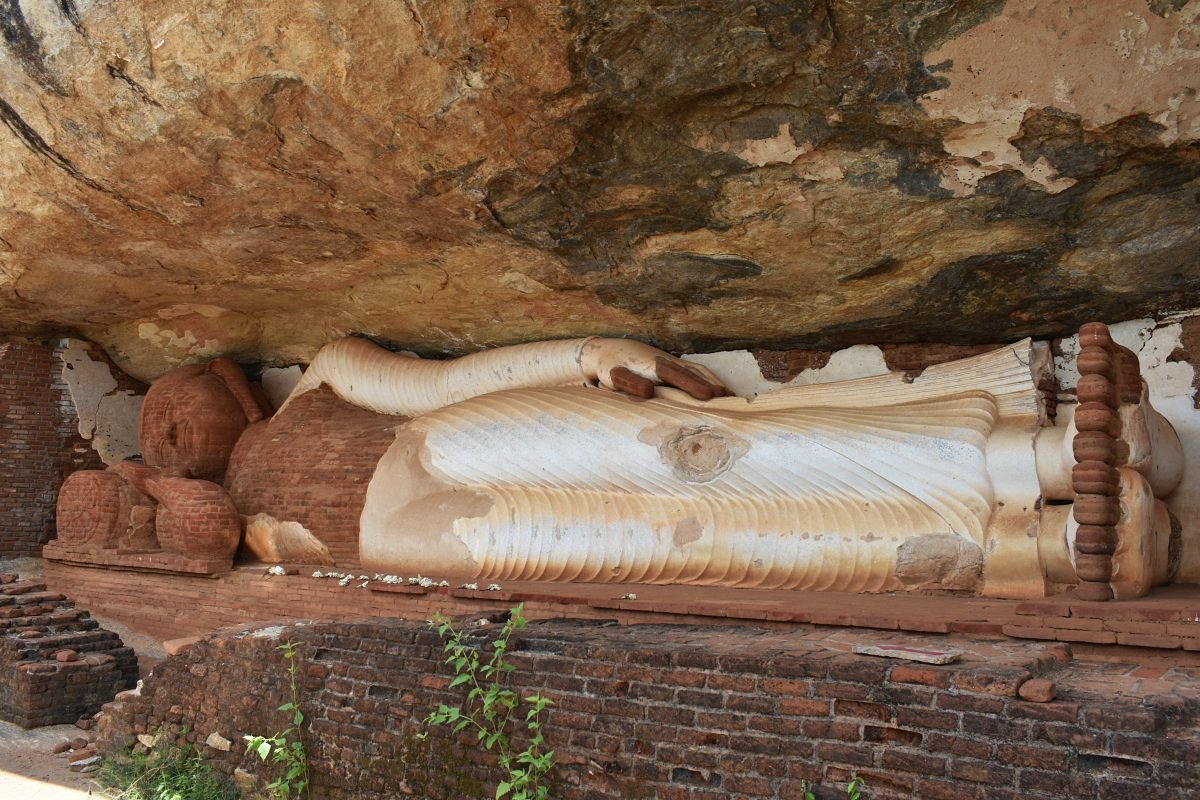
Looking at the time, we were a bit confused because we got to this spot so early, but at this point assumed that the more difficult part of the path to the top is longer.
The second stage of the climb
Took a sip of water and we continued uphill, following the now narrow and squeezed between boulders path. Almost immediately we met two local men coming downwards, both were barefooted and carrying their bike helmets in their hands. One had a bag in his other hand. Even more confused, we asked them how far is the top and they said that it was just over there, pointing to the rock behind them. Well, if somebody without shoes and stuff in both hands got to the top, it was fair to assume it wasn't a two-hour climb.

We continued going up and yes, we had to climb some big rocks and make several small jumps from one boulder to another, but we got to the top in about 5 minutes from the brick Buddha, 20 from the start of the path. That's right, the total amount of time an average person needs to go up and down the Pidurangala rock is about 40 minutes, not including time for breaks and photos.
Here is the place to say that if you have any limitations regarding mobility, for example, if you can't climb a smooth rock that is about 1 m high or jump the same distance, you probably will not be able to reach the top. This, unfortunately, means you will miss out on the best part - the views from above because almost all the path is through a forest and doesn't offer good vantage points before reaching the end.
At the top
Of course, the first thing one notices up there is the awesome view towards Sigiriya Fortress. The legendary rock stands out, powerfully demanding attention at a perfect distance - both far enough to be admired completely and close enough to see details. Unfortunately, the lion's paws of the main staircase are not visible, hidden by the trees around them, but the higher sections of the staircase can easily be spotted, as well as some of the ruins at the top. We just looked at it and tried to imagine what it was like centuries ago when the gigantic lion was perfectly visible from there and the palace/monastery of Sigiriya stood like a crown on the stone outcrop.
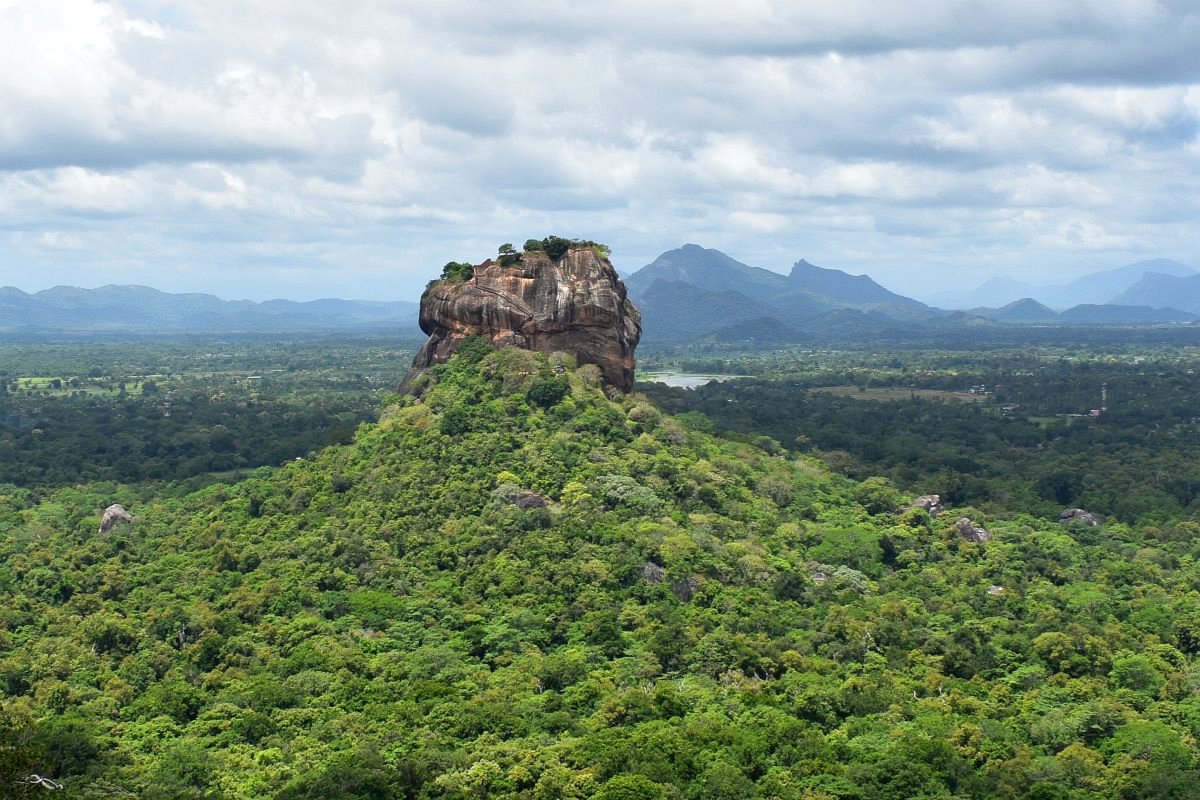
When you are ready to take your eyes off the fortress you will discover that climbing Pidurangala was worth it, even just for the sweeping views of the jungles and lakes around. We were lucky to be there on a clear day with good visibility, all the way to Ritigala mountain, which is 20 km away (straight line).
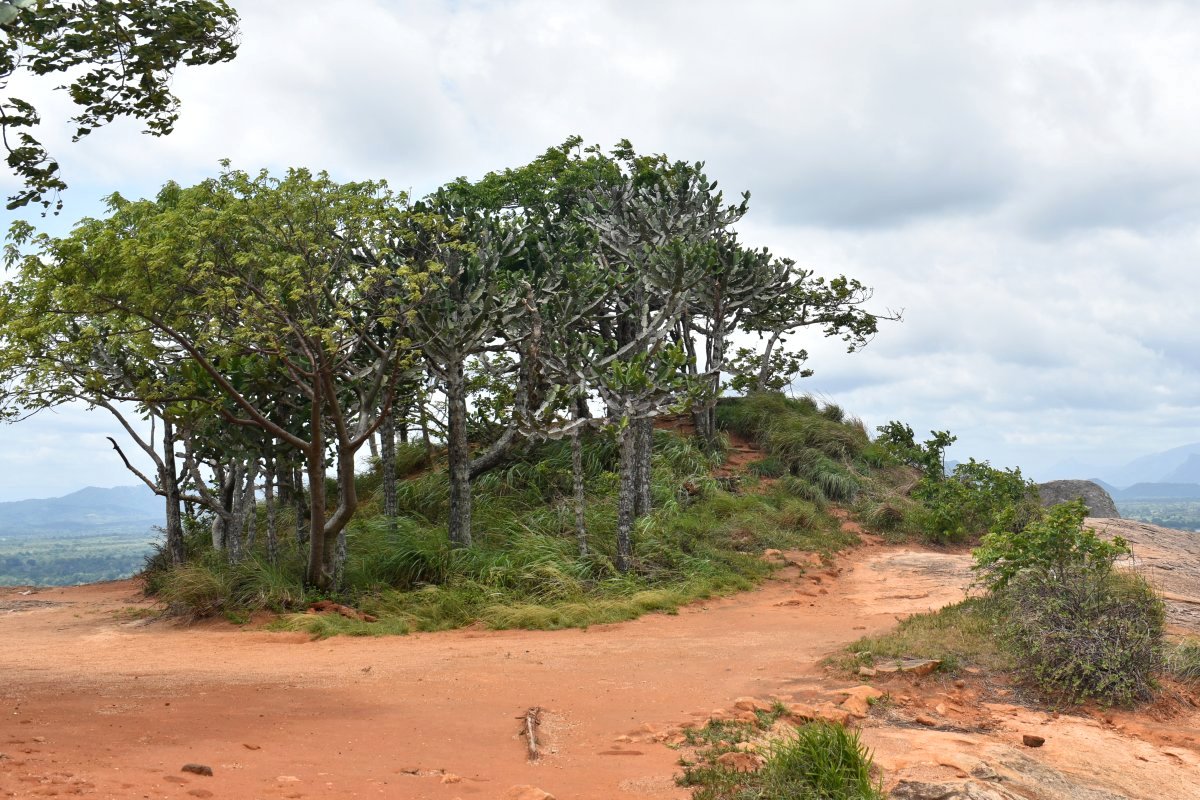
Exploring the top is also a nice way to relax, the sloped rock was not suitable for large scale construction like its famous neighbour, but the ancient people have left their mark there as well. Two small stupas are now just piles of bricks being taken over by cacti. Looking at the ground we discovered some very symmetrical channels in the rock, probably used to hold wooden foundations of buildings.
When to visit Pidurangala?
The good news is that whatever time you pick to climb the rock, you will have something nice to look forward to.
- Sunrise - considered a must-do by many. Watching the sun come up from such a high vantage point is guaranteed to reward you with great memories. Sigiriya Fortress will be bathed in the first rays, a sight surely worth getting up early.
- Daytime - most people choose this option because it is easier to plan, so might get crowded. More sunlight means more heat as well as better visibility in all directions.
- Sunset - watching the sun set behind the fortress is surely a magical moment. If you are lucky you might get a multicoloured Sri Lankan sunset on top of that - countless hues of yellow, orange and purple sometimes create unbelievable scenes.

Comments